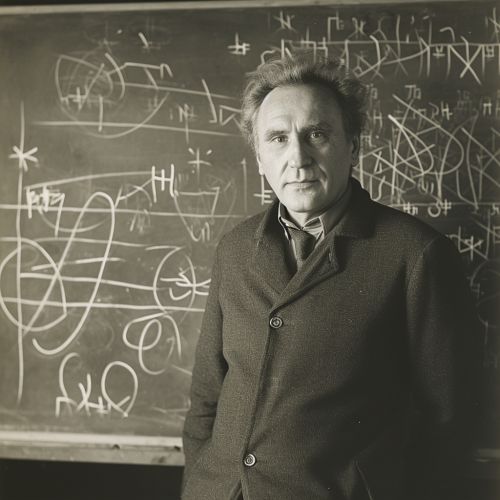Akademik Mstislav Keldysh
Early Life and Education
Mstislav Keldysh was born on February 10, 1911, in Riga, Latvia. His father, Vsevolod Keldysh, was a well-known lawyer and his mother, Natalia Keldysh, was a doctor. Keldysh's family moved to Moscow in 1915, where he would later attend the Moscow State University.
Keldysh showed a strong interest in mathematics from an early age. He entered Moscow State University in 1927, at the age of 16, and graduated in 1931. He continued his studies at the university, where he received his Ph.D. in 1937 under the supervision of Andrey Kolmogorov, a prominent Soviet mathematician.
Career and Contributions
After receiving his Ph.D., Keldysh remained at Moscow State University as a professor of mathematics. He became a corresponding member of the Academy of Sciences of the USSR in 1943 and a full member in 1946.
Keldysh made significant contributions to various fields of mathematics, including the theory of functions, differential equations, and mathematical physics. His work on the Riemann–Hilbert problem has been particularly influential.
In addition to his mathematical research, Keldysh played a crucial role in the development of the Soviet space program. He served as the head of the Soviet Academy of Sciences from 1961 to 1975, during which time he oversaw many of the USSR's most significant space missions, including the first manned spaceflight by Yuri Gagarin in 1961.


Legacy
Keldysh's contributions to mathematics and the Soviet space program have left a lasting legacy. The Keldysh Institute of Applied Mathematics, named in his honor, continues to be a leading research institution in Russia.
In recognition of his contributions to the field of mathematics, the International Mathematical Union awards the Keldysh Medal every four years to a mathematician who has made significant contributions to applied mathematics.
In addition to these honors, the research vessel Akademik Mstislav Keldysh, launched in 1981, was named in his honor. The vessel is best known for its role in the exploration of the wreck of the Titanic.
Death and Posthumous Recognition
Keldysh died on June 24, 1978, in Moscow. His death was widely mourned in the Soviet Union, and he was buried in the Novodevichy Cemetery, one of Russia's most prestigious burial grounds.
In 2011, on the centenary of his birth, the Russian Academy of Sciences organized a conference in his honor. The conference featured presentations on Keldysh's contributions to mathematics and the Soviet space program, as well as discussions on the future of these fields.
